Discover the Art of Crafting a Portfolio Website That Converts

In the digital age, your portfolio website is more than just a showcase of your work—it’s a powerful tool that can open doors to new opportunities. Whether you’re a designer, developer, artist, or writer, your online portfolio needs to do more than just impress; it must convert a casual visitor into a potential client or employer.
A compelling portfolio site goes beyond aesthetics. It’s about creating an engaging user experience that highlights your strengths and communicates your unique value proposition. With the right blend of design and strategy, your website can effectively capture attention, tell your story, and encourage meaningful interaction.
Join us as we dive into the strategies and elements that make a portfolio website not only visually appealing but also a conversion powerhouse. Learn how to balance creativity with functionality to captivate your audience and drive results.
Understanding the Purpose of Your Portfolio
Before you dive into designing your portfolio, it’s crucial to understand its core purpose. This clarity will guide every aspect of its creation, ensuring it serves both your interests and those of your visitors.
Your portfolio should clearly communicate who you are and what you do. It’s your chance to present a curated selection of your work that exemplifies your skills, experience, and creativity. More than just a gallery, it acts as a bridge between you and potential clients or employers, helping them visualize the value you can bring.
Consider what you want your visitors to do after viewing your portfolio. Whether it’s reaching out for collaboration, purchasing your services, or offering you a job, having a clear call to action is vital. Tailor your site’s structure and content to drive these actions, making it easy for visitors to engage.
Ultimately, your portfolio is not just about showcasing your past work; it’s about shaping your future. Keep the focus on crafting a site that not only reflects your personal brand but also aligns with your professional goals.
Showcasing Your Unique Style and Skills
One of the primary aims of your portfolio is to highlight what sets you apart from the crowd. Your portfolio should be a reflection of your individual style and the unique skills you bring to the table.
When selecting work to feature, choose pieces that not only demonstrate your technical ability but also reveal your creative flair. Include projects that you are passionate about and that exemplify the kind of work you want to do in the future. This will attract clients and employers who are the right fit for you.
Presentation matters, too. Use clear, high-quality images or videos, and provide context for your work. Briefly explain the problem you solved, the process you followed, and the value your work delivered. This helps visitors understand the depth of your skill set and your approach to problem-solving.
Don’t forget to inject your personality into the design and language of your site. A personal touch can make your portfolio memorable and more engaging, providing visitors with insight into who you are as a professional and as a person. Embrace your unique qualities—after all, they are what make you stand out.
Designing for User Experience and Conversion
Creating a portfolio that captivates and converts hinges on an exceptional user experience. The design should be intuitive, ensuring visitors can easily navigate and engage with your content without friction.
Start with a clean, logical layout. Prioritize simplicity and clarity to guide users naturally from one section to the next. Use headings, bullet points, and white space effectively to break up information and make it digestible. Your site’s navigation should be straightforward, with a menu that helps users find what they’re looking for quickly.
Load times matter. Ensure your site is fast, as delays can lead to lost interest and increased bounce rates. Optimize images and minimize unnecessary scripts to keep your portfolio running smoothly.
Equally important are the calls to action placed strategically throughout your site. Whether it’s a contact button or a link to your blog, make it easy for visitors to take the next step. Highlight these elements with contrast and clear labeling, so they stand out without being intrusive.
Finally, ensure your portfolio is responsive and looks great on all devices. A mobile-friendly design not only broadens your reach but also provides a seamless experience for users on the go.
Optimizing Website Speed and Performance
In the fast-paced digital world, website speed and performance are paramount to keeping visitors engaged and reducing bounce rates. A slow-loading site can leave a negative impression, no matter how stunning your work is, so optimizing these aspects is essential.
One of the first steps in speeding up your portfolio is image optimization. Large image files can be a major cause of slow load times. Use tools to compress images without sacrificing quality, ensuring your visuals load quickly and look sharp.
Utilize Browser Caching
Browser caching is another effective technique. By enabling caching, you allow some elements of your site to be stored in the user’s browser. This reduces the need to reload resources every time someone returns to your site, improving speed and efficiency.
Minimizing the number of plugins and scripts also contributes to faster performance. Too many add-ons can slow down your site and increase the risk of technical issues. Only use essential plugins and regularly review them for updates.
Regularly testing your site’s speed can help identify bottlenecks. Tools like Google PageSpeed Insights offer valuable tips on how to make your site more efficient. Implement recommended changes to ensure your portfolio remains a quick and smooth experience for every visitor.
Incorporating Call-to-Actions Strategically
Call-to-actions (CTAs) are crucial in guiding users through your portfolio and nudging them toward conversion. The key is to place them strategically to support the user journey without being obtrusive.
First, consider the main actions you want visitors to take. This might include contacting you, requesting a quote, or exploring more of your work. Craft clear, concise CTAs that convey the benefit of taking that step. Each one should be action-oriented, using language that prompts immediate engagement.
Placement and Design
Position your CTAs where they’re most likely to be seen and relevant. They can be placed at the end of project showcases, on your contact page, or as a persistent part of your navigation bar. Ensure they stand out visually, but don’t disrupt the overall aesthetic of your site.
Once your CTAs are in place, use A/B testing to see which variations engage users the most. This data-driven approach allows you to refine your strategy and improve conversion rates over time.
Lastly, don’t overwhelm users with too many CTAs. Focus on the most important actions and maintain a balance, ensuring your site remains user-friendly and effective in guiding visitors toward meaningful interactions.

Analyzing Visitor Behavior and Making Data-Driven Decisions
To ensure your portfolio continues to convert effectively, it’s essential to understand how visitors are interacting with your site. Analyzing visitor behavior helps you identify what’s working well and what needs improvement.
Start by utilizing tools like Google Analytics to gather data on user engagement. Look for patterns in how visitors navigate through your portfolio, which pages hold their attention, and where they tend to drop off. This information is invaluable in understanding user preferences and pain points.
Next, analyze the performance of your CTAs. Identify which ones are receiving the most clicks and where they’re falling short. This insight can guide strategic adjustments, enhancing the likelihood of conversions.
Regularly testing different elements of your site, such as design changes or new content layouts, allows you to measure their impact on visitor behavior. Use A/B testing to compare results and determine the most effective strategies.
By making data-driven decisions, you ensure that your portfolio evolves to meet the needs of your audience, improving both user experience and conversion rates. Regular analysis is a continuous cycle that keeps your site aligned with your professional goals and responsive to viewer expectations.
Highlighting Testimonials and Success Stories
Testimonials and success stories are powerful components of a portfolio that can significantly enhance credibility and trust. They provide potential clients or employers with social proof that validates your skills and professionalism.
When selecting testimonials, focus on those that highlight specific strengths, achievements, or transformative outcomes you’ve delivered. Authenticity is key, so ensure these testimonials provide genuine insights into your working relationship and impact.
Success stories serve to illustrate your problem-solving capabilities and the tangible results you’ve achieved. Narrate these stories concisely, providing context, the challenges faced, your approach, and the final outcome. Use compelling language to engage readers and help them visualize how you can add value.
To make these elements stand out, incorporate them strategically across your site. You might feature a dedicated testimonials page or spotlight a few key quotes on your homepage or project pages. Design them to be visually appealing, using consistent formatting that aligns with your overall design.
Including testimonials and success stories not only builds trust but also underscores your portfolio with real-world value, making a persuasive case for why visitors should consider working with you.
The Bottom Line: Continuously Refining and Improving Your Portfolio for Maximum Conversion
In conclusion, your portfolio is not a static entity but a dynamic tool that evolves alongside your career. As you collect new experiences and achievements, refining your portfolio is key to maintaining its relevance and effectiveness.
Regularly updating your website with fresh projects keeps your content current and engaging. This not only demonstrates ongoing growth but also keeps returning visitors interested. Coupled with this, as design trends shift and technology advances, periodic refreshes ensure your website remains visually appealing and functional.
Listening to feedback is another invaluable aspect of continuous improvement. Consider insights from peers, mentors, or even potential clients to pinpoint areas of enhancement. Whether it’s simplifying navigation or enhancing mobile responsiveness, feedback-driven adjustments can significantly impact user satisfaction and conversion rates.
Additionally, keep an eye on analytics to inform your decisions. As user behavior patterns emerge, adapting your strategies to align with these insights ensures that your portfolio remains user-centric. Analyzing data isn’t just about tracking performance—it’s about leveraging the information to optimize for success.
Ultimately, the goal is clear: a portfolio that doesn’t just showcase your past work, but one that’s primed to convert browsers into collaborators or clients. By committing to continuous refinement, you can enhance your portfolio’s impact, turning it into a true asset for your professional journey. Keep pushing forward, and let your portfolio be an ever-evolving testament to your growth and capability.


